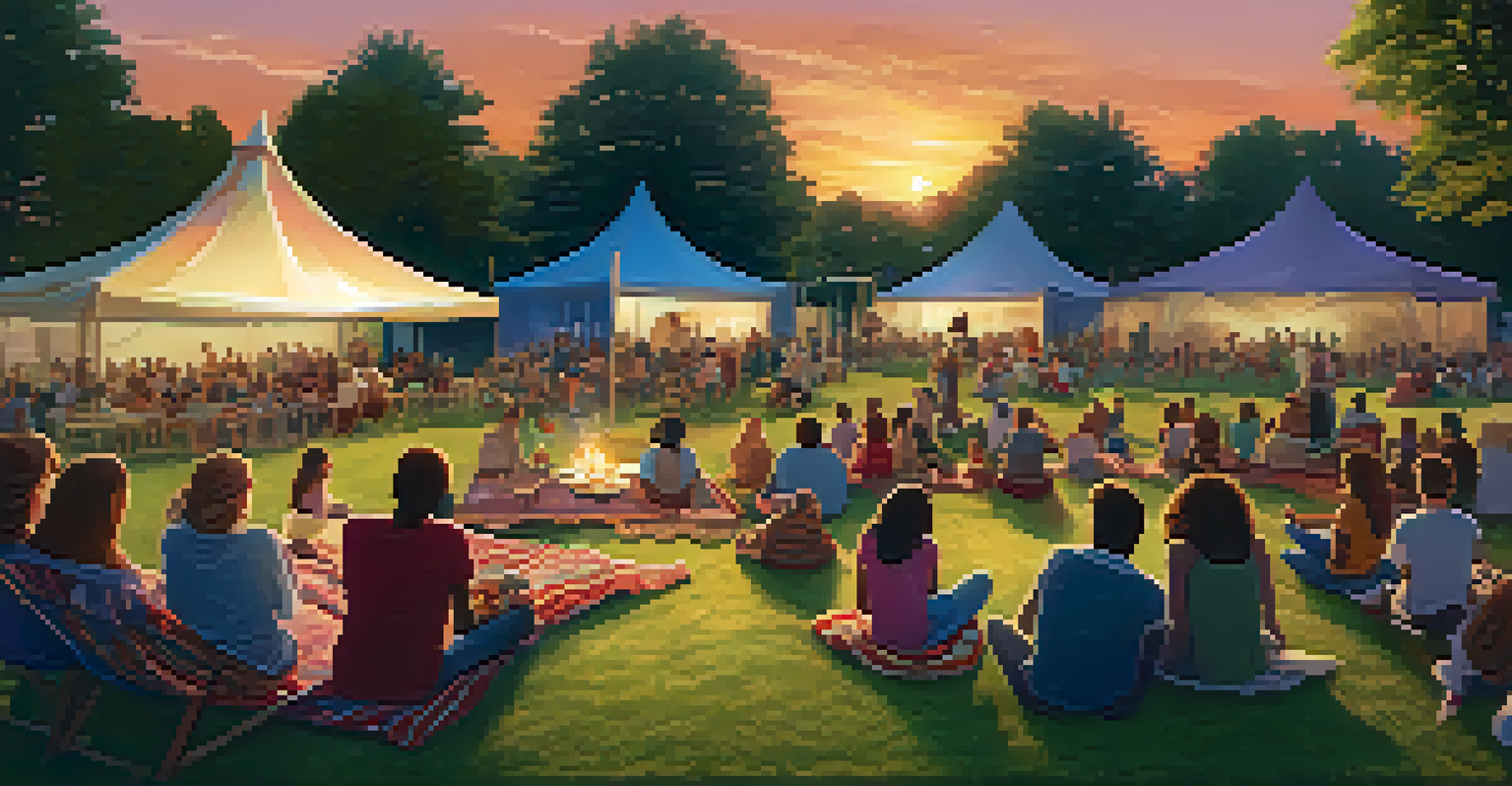The Effect of Hollywood's Historical Dramas on Education

Hollywood's Role in Shaping Historical Perspectives
Hollywood has a powerful influence on public perceptions of history. Movies often dramatize events, making them more engaging for viewers. This dramatization can lead to a skewed understanding of historical facts, as audiences may prioritize entertainment over accuracy.
The past is not dead; it is not even past.
For instance, films like 'Gladiator' and '12 Years a Slave' can spark interest in historical events, prompting viewers to seek more information. However, the artistic liberties taken in these productions can blur the lines between fact and fiction. This dichotomy can be both enlightening and misleading, depending on how audiences process the information.
As educators, it's crucial to address these portrayals in the classroom. Discussing the differences between cinematic representation and historical reality can help students develop critical thinking skills. Engaging students in discussions about these films can make history come alive while emphasizing the importance of factual accuracy.
Inspiring Student Interest Through Film
Historical dramas can ignite a passion for learning in students who might otherwise disengage from traditional teaching methods. The visual nature of films captures attention and can provide a relatable context for complex historical events. For example, a student learning about the Civil Rights Movement may feel more connected to the subject after watching 'Selma.'

These films often humanize historical figures, allowing students to empathize with their struggles and triumphs. When students see the emotions and motivations behind historical actions, they may feel inspired to explore further. This can lead to increased research and discussion, fostering a deeper understanding of the subject matter.
Hollywood Influences Historical Views
Films often dramatize historical events, which can lead to a skewed understanding of facts among audiences.
Moreover, educators can leverage these films to create interactive lessons that combine film analysis with historical inquiry. By asking students to compare film narratives with historical texts, teachers can cultivate analytical skills and a more nuanced understanding of history.
The Risks of Historical Inaccuracies
While Hollywood's take on history can be engaging, it often comes with the risk of inaccuracies. These inaccuracies can perpetuate myths or stereotypes that misrepresent historical events and figures. For example, the portrayal of Native Americans in various films has often been criticized for lacking depth and nuance.
History is written by the victors.
This misrepresentation can lead to a distorted view of history among audiences, particularly young students. When they rely solely on films for their understanding of historical events, they may form opinions based on incomplete or biased information. This is where the role of educators becomes vital in correcting these misconceptions.
Teachers can use films as a springboard for discussions about historical accuracy. By encouraging students to research and debate the differences between cinematic portrayals and actual events, they can help students develop a more informed perspective on history.
Promoting Critical Thinking Through Film Analysis
Analyzing historical dramas encourages students to think critically about the sources of their information. By assessing the motivations behind a film's portrayal of events, students learn to question the narrative presented to them. This skill is invaluable not just in history, but across all subjects.
For instance, when watching a movie like 'The Imitation Game,' students can dissect how the film presents Alan Turing's story versus the actual historical record. This comparison allows for discussions on bias, perspective, and the importance of diverse narratives in history. Students can learn to appreciate multiple viewpoints and recognize the complexity of historical events.
Films Ignite Student Interest
Historical dramas can engage students and make complex events relatable, fostering a passion for learning.
Encouraging such analysis empowers students to become more discerning consumers of media. In today's digital age, where misinformation can spread easily, fostering critical thinking skills is essential for their future.
Films as Tools for Diverse Historical Narratives
Hollywood has the potential to broaden the scope of historical narratives by showcasing diverse perspectives. Films like 'The Help' or 'Hidden Figures' highlight the contributions of underrepresented groups, bringing their stories to the forefront. This diversity can enrich students' understanding of history by showcasing the complexity of social dynamics.
When students are exposed to a variety of historical viewpoints, it encourages inclusivity and empathy. They can better grasp the multifaceted nature of history and appreciate the contributions of different cultures and communities. This awareness can inspire a more holistic understanding of past events.
Moreover, educators can use these films to initiate discussions about current social issues, drawing parallels between historical struggles and contemporary challenges. This connection can make history relevant and relatable, encouraging students to engage with the material on a personal level.
Enhancing Classroom Discussions with Film
Incorporating historical films into classroom discussions can lead to richer educational experiences. Teachers can use film clips to illustrate key moments in history, sparking interest and engagement among students. This multimedia approach caters to different learning styles, helping students grasp complex concepts more easily.
For example, showing a clip from 'Schindler's List' can provoke powerful discussions about the Holocaust and human rights. These emotional responses can create a safe space for students to express their thoughts and feelings about sensitive topics. It encourages open dialogue and deeper understanding.
Critical Thinking Through Film Analysis
Analyzing historical films encourages students to question narratives and develop a more informed perspective on history.
By framing these discussions around film, educators can foster a collaborative learning environment. Students can share their insights, question assumptions, and build on each other's ideas, creating a dynamic and interactive classroom experience.
The Future of Historical Education in Film
As the landscape of media continues to evolve, so too does the potential for historical education through film. Streaming services are producing a wider variety of historical dramas, providing educators with more resources than ever. This accessibility can enhance classroom materials and expand the narratives available to students.
However, it remains essential for educators to maintain a critical lens when selecting films for their classrooms. Choosing films that accurately reflect historical events while also engaging students is key. This balance can help ensure that students not only enjoy the material but also learn from it.

Looking ahead, the collaboration between educators and filmmakers could lead to even more accurate and compelling historical narratives. By sharing insights and resources, both parties can work together to create films that educate and inspire future generations.